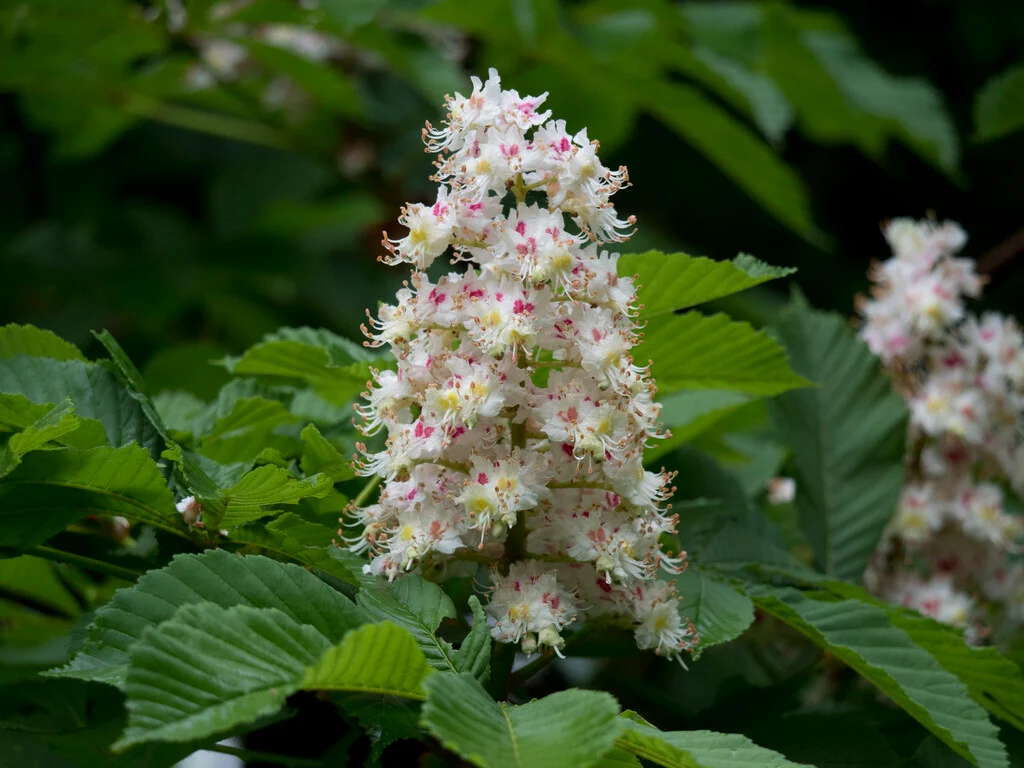
Aesculus
Latin name: Aesculus hippocastanum
Short name: Aesc
Common name: Horse Chestnut | Buckeye | Conker Tree | European Horse Chestnut | Wild Chestnut
Primary miasm: Sycotic Secondary miasm(s): Psoric
Kingdom: Plants
Family: Sapindaceae
- Symptomatology
- Remedy Information
- Differentiation & Application
A deciduous tree native to southeastern Europe; its seeds (conkers) contain aescin, a complex mixture of saponins known for venotonic properties.
Widely used in herbal and pharmaceutical medicine for chronic venous insufficiency, haemorrhoids, and varicose veins due to its vein-toning and anti-inflammatory effects.
First proved by Dr. W. E. Payne, and later confirmed by Hale and others; toxicological effects and provings are recorded in Hale’s New Remedies and Hering’s Guiding Symptoms
- Rectum and Pelvic Veins – chronic venous stasis, haemorrhoids, rectal pain, congestion
- Liver and Portal Circulation – passive congestion, fullness, dull pressure
- Back and Sacroiliac Region – deep aching pain, especially lumbosacral and sacrum
- Mucous membranes – dryness, burning, rawness, especially in rectum and throat
- Venous system – dilated veins, varicosities, haemorrhoidal fullness
- Male pelvic organs – prostate, seminal vesicles, and spermatic cord congestions
- Gentle movement
- Cool air
- Lying down (in some back symptoms)
- Application of cold to haemorrhoids
- After stool (rectal pain relieved in some cases)
- Standing or walking for long
- Cold, damp weather
- After stool (especially rectal and sacral pain)
- During pregnancy (pelvic congestion)
- Afternoon and evening
- Motion (especially back and sacral pains)
- Nux vomica – Also has rectal issues and portal congestion, but more spasmodic and irritable
- Aloe socotrina – Haemorrhoids with urgency and mucus, more rectal fullness and involuntary stools
- Collinsonia – Haemorrhoids with constipation during pregnancy, more cardiac symptoms
- Hamamelis – Haemorrhoids and varicosities, more bleeding and bruised sensation
- Sulphur – Burning anus, morning diarrhoea, constitutional psora with heat
- Complementary: Nux vomica, Collinsonia
- Antidotes: Nux vomica, Chamomilla
- Follows well: Sulphur, Pulsatilla
- Precedes well: Sepia, Lycopodium
Aesculus is the archetype of venous congestion without inflammation. The remedy’s essence is found in heaviness, fullness, and dull aching, especially in the rectum, back, and pelvis. It is particularly suited to sedentary individuals, especially those with a sluggish constitution, torpid liver, and pronounced haemorrhoidal suffering. The rectal symptoms are key: dryness, fullness, and pain without bleeding, and often without stool. It is also a back remedy—where pain and lameness arise from venous sluggishness. Aesculus is a remedy for torpor, not intensity.
- Chief remedy for dry, congested haemorrhoids with rectal pain post-stool
- Valuable in sacroiliac pain that coexists with portal or pelvic congestion
- Helpful in venous insufficiency of the lower limbs and varicosities
- Consider in pregnancy-related haemorrhoids or rectal discomfort
- A key remedy for prostatic congestion with backache and rectal pressure
Rectum
- Fullness, sensation of
- Haemorrhoids, blind, painful
- Pain, after stool, long-lasting
- Dryness, without stool
- Itching, burning
Back
- Pain, sacrum, as if bruised
- Pain, lumbar, worse walking
- Weakness, spinal
Mind
- Gloomy, depressed
- Difficulty thinking
- Irritability from pain
Generalities
- Venous stasis
- Worse standing, walking
- Better lying down
Skin
- Itching, anus
- Varicose veins
- Dryness, eruptions
Dr. W. E. Payne – Original prover and observer of rectal sphere
Hale – New Remedies: Described venous and spinal indications in detail
C. Hering – Guiding Symptoms: Gave the most detailed rectal and back symptomatology
T.F. Allen – Encyclopaedia: Confirmed hepatic and general venous action
John Henry Clarke – Dictionary of Practical Materia Medica: Emphasised dullness, back pain, and portal symptoms
William Boericke – Pocket Manual: Provided clinical pearls for rectal, liver, and spinal cases
